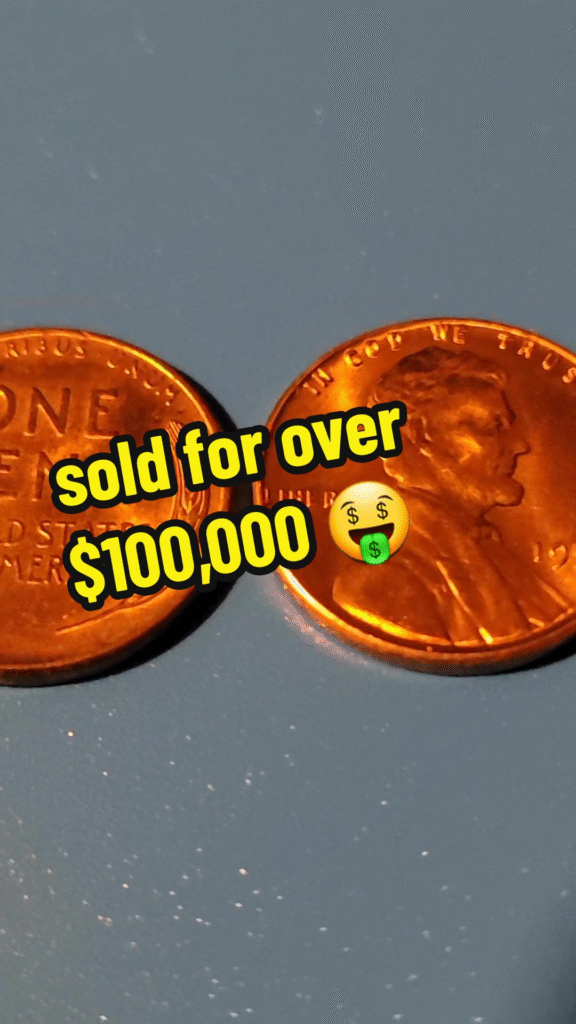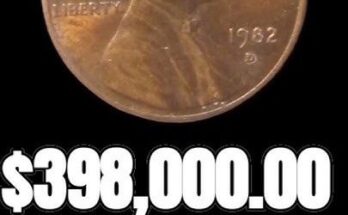
$114,000 Mule Penny
penny errors ever discovered. Two of the biggest legends are the 2000-P “Mule” Penny, which sold for an incredible $114,000, and the rare 1959 Weak Reverse Strike, known to bring $10,000–$50,000+ for severe examples.
If you have pennies from 1959 or 2000–2001, you might be sitting on a life-changing treasure. Here’s what to look for.
🏆 The $114,000 2000-P “Mule” Penny — A Once-in-a-Lifetime Error
🔍 What Is a Mule Error?
A mule occurs when the Mint accidentally pairs the obverse of one coin with the reverse of a different denomination — creating a hybrid that should not exist.
💰 The Famous 2000-P Lincoln/Sacagawea Mule
This is one of the rarest modern U.S. errors ever confirmed.
What it looks like:
- ✔ Obverse: Standard 2000 Lincoln cent
- ✔ Reverse: Not the Lincoln Memorial — instead, the Sacagawea dollar eagle design
- ✔ Mintmark: “P” (Philadelphia)
- ✔ Weight: Should still weigh about 2.5 grams (normal penny)
- ✔ Auction Record: $114,000 (Heritage Auctions, 2021)
🔎 How to Identify One
- Flip the coin: the reverse MUST be the Sacagawea eagle
- Date must read 2000
- Weight should match a penny, not a dollar
If all three match… stop everything. You may have a six-figure rarity.
💎 The $50,000 1959 “Weak Reverse” Penny
The year 1959 introduced the Lincoln Memorial reverse. But a small batch of coins struck that year show a weak, blurry, or ghost-like Memorial, caused by a misaligned or worn die.
🔍 How to Spot a Weak Reverse Strike
- Date: 1959
- Reverse:
- Soft, incomplete, or nearly invisible Lincoln Memorial
- Obverse:
- Sharp, strong Lincoln portrait with normal detail
💰 Value Estimates
- Minor weakness: $50–$500
- Moderate weakness: $1,000–$5,000
- Severe “ghost” strike: $10,000–$50,000+
These are extremely rare — but they have been found in pocket change, rolls, and old jars.
🕵️♂️ How to Search for These Errors
1️⃣ Check 1959 & 2000–2001 Pennies
Look in:
- Bank rolls
- Estate sales
- Inherited change jars
- CoinStar reject trays
- Old piggy banks
2️⃣ Use a 10×–20× Magnifier
You’ll need it to:
- Spot mismatched reverses (Mule Penny)
- Detect faded details (Weak Reverse Penny)
3️⃣ Weigh the Coin
- 1959 penny: 3.11g (copper)
- 2000 penny: 2.5g (zinc)
- Pennies should not stick to a magnet (unless it’s a 1943 steel cent)
💰 What to Do If You Find One
1️⃣ Protect It Immediately
- Handle by the edges
- Avoid fingerprints
- Store in a non-PVC coin holder or flip
2️⃣ Get It Professionally Graded
For maximum value, authenticate through:
- PCGS
- NGC
3️⃣ Sell Through a Major Auction House
These coins fetch the strongest bids at:
- Heritage Auctions
- Stack’s Bowers
Raw finds rarely bring the highest prices — certified coins do.
📈 Market Outlook (2024–2025)
- 🚀 Error coins continue smashing price records
- 🔥 Growing online communities boost awareness & demand
- 💰 Experts believe the next 2000-P Mule could break $200,000
🎁 Free Collector Resources
- 📖 Download: Penny Error Checklist
- 🎥 Watch: How to Spot Rare Weak Strikes
- 💬 Join: Our Coin-Hunting Community
📸 Think you’ve found a $114,000 penny?
Submit clear photos (front, back, close-up of the reverse) for a FREE expert review.
💬 Have YOU checked your 1959 or 2000 pennies? Drop a 🪙 in the comments if you’re hunting!



Leave a Reply